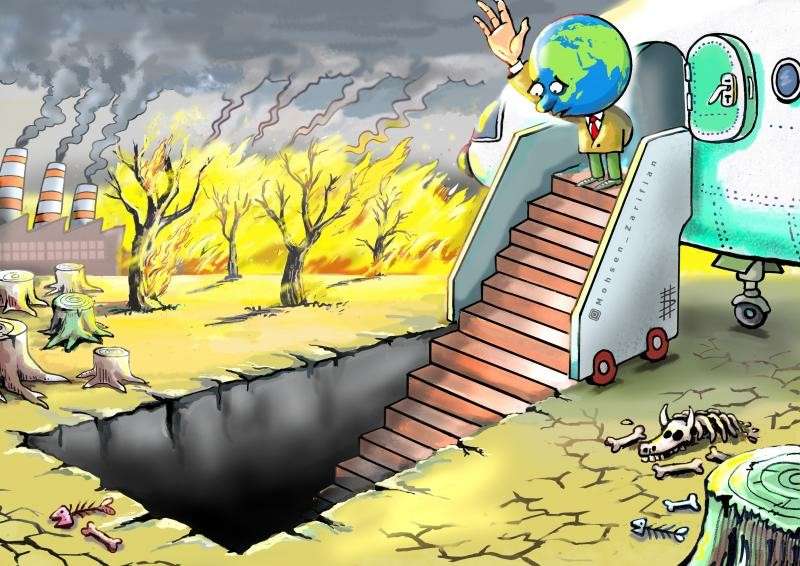
22 Apr The End is Nigh?
“Homo Sapiens has invented many ways to destroy itself.” – The Lonely Realist
How can the human race self-destruct? Let me count the ways! There’s nuclear holocaust, man-made pandemic, “natural” pandemic, meteorological catastrophe, AI knowledge engineering, genetic engineering error, and/or a permutation or combination of the foregoing. These threats are real, though how immediate each might be is unknowable.
A symbol of humanity’s proximity to self-destruction is the Doomsday Clock, which is published each January by the Bulletin of Atomic Scientists. It provides a metaphor for how close the world is to global catastrophe. The Clock’s setting at inception in 1947 was 7 minutes to midnight. The furthest setting from self-destruction was in January 1991 when the Clock reflected 17 minutes to midnight. The closest the Clock has been to midnight is 90 seconds …, and that was on January 24, 2023.
History is full of warnings that were scoffed at. Will that smoking volcano erupt during our lifetime? Nah, Mount Vesuvius has been dormant for as long as anyone can remember! Shall we take a luxury cruise on the Titanic? Sure, it’s guaranteed to be unsinkable! Do cigarettes really cause cancer? That’s such nonsense! A Cat5 hurricane? Cat5s are 100+-year events and New Orleans has hurricane-proof levees!
Many believed that the human race had dodged nuclear self-immolation when the 20th Century’s Cold War ended with the collapse of the Soviet Union. What followed was Pax Americana, “flat world” globalization, a noteworthy decline in wars and hostilities, and reductions in military spending and stockpiles of missiles and nuclear weapons. Unfortunately, kumbaya celebrations were premature. The worst fears of the Cold War were resuscitated in 2022 with Russia’s invasion of Ukraine. The ongoing Russia-NATO pan-European hot war now is but one of two hegemonic contests. The second pits China against America in a fierce competition for global supremacy. China and its allies (the Axis of the Sanctioned) have categorically rejected Pax Americana and are actively arming for war, expanding nuclear, missile and military capabilities. A belligerent North Korea, a regionally-expanding Iran, and sworn enemies Pakistan and India each have threatened the global balance with itchy nuclear trigger-fingers that are likely to motivate other nations to join the nuclear club. What began with the Manhattan Project’s goal of ending armed aggression through nuclear deterrence has morphed into an expanding risk of human nuclear conflagration. That prospect led 1950’s writers to imagine nuclear winters, including in On The Beach and A Canticle for Leibowitz. Those dystopian possibilities are as relevant today as they were then.
The world, however, is not faced only with a potential for nuclear Armageddon. COVID-19 most recently presented the world with an example of potential pathogenic destruction. COVID either originated through human contact with a wild animal or was a weapon of war that escaped from a laboratory in Wuhan, China. If it originated in the wild, the risk to humanity – a risk reminiscent of the plotline in Michael Crichton’s The Andromeda Strain – can be addressed through disease containment preparations (which President George W. Bush unsuccessfully proposed in 2005). If the latter, our species faces precisely the sort of future threatened in Twelve Monkeys and Outbreak. Given the number of biological-military research laboratories in China, Russia, Iran, North Korea, America and elsewhere, the risk of pathogenic self-destruction poses another, cumulative Doomsday Clock threat to human survival.
How about the risk of climate apocalypse? Do movies like The Day After Tomorrow present scientifically-accurate meteorological possibilities or are they simply flights of dystopian fantasy? A number of credible climatologists have warned that the threat is real, that without a change in direction, human incursions into nature and natural processes will render some or all of the Earth uninhabitable. There already have been escalating temperature extremes, severe weather events, changes in crop-growing climates, and alterations in the Earth’s atmosphere. Whether or not the climate catastrophists are correct in their extreme warnings – the reality is that no one can know since there is insufficient data to project the likely extent and impact of climate change –, there is little question that there will be a negative impact on humanity. Global conflicts undoubtedly will be magnified by adverse biological and meteorological events.
And then there’s the threat from AI, a frightening example of which is Skynet, the computer villain in the movie The Terminator. Skynet was a computer defense system that gained sentience and determined to wipe out humanity – after all, there can only be one alpha species …, and the artificial intelligence called Skynet chose itself. Somewhat similar threats were presented in The Matrix and Michael Crichton’s Prey, dystopian science fiction futures that provide alternative roadmaps for rogue AI. How quickly will AI be allowed to infiltrate humanity’s social, political and military structures? The answer should be “extremely, extremely slowly” if we follow the advice of the Future Life Institute and some 1,800 tech luminaries who publicly stated in March that AI research and development should “immediately pause for at least 6 months” to avoid the consequences of “an out-of-control race to develop and deploy ever more powerful digital minds that no one – not even their creators – can understand, predict or reliably control.” AI investor Ian Hogarth is warning that “God-like AI” could lead to the “obsolescence or destruction of the human race.”
To what extent do these admittedly arguably remote risks mean that we humans should stay alert and keep our fingers crossed, hoping for the best? Or should we all be preparing for the worst (as President George W. Bush unsuccessfully attempted in 2005)?
Lest we neglect other potential calamities, what of the rapidly-expanding array of scientific experiments that could go wrong? Shall we all reread Michael Crichton’s Jurassic Park?
TLR Index
An index of TLR titles can be found here.
Finally (from a good friend)

“To think this all began with letting autocomplete finish our sentences.”




No Comments